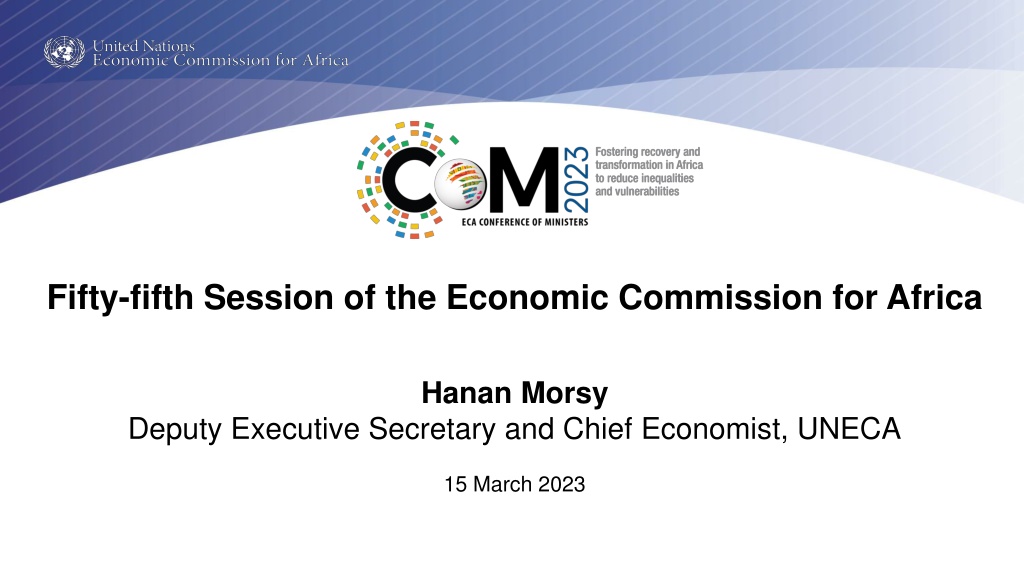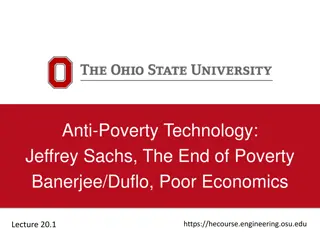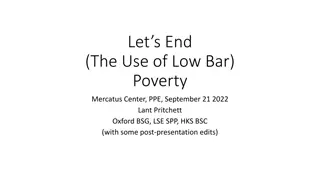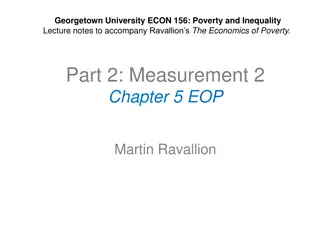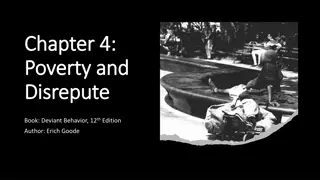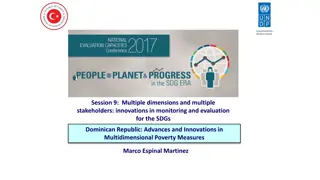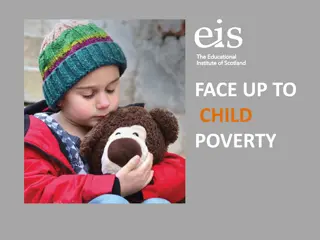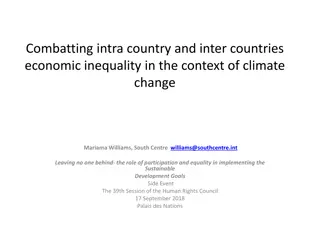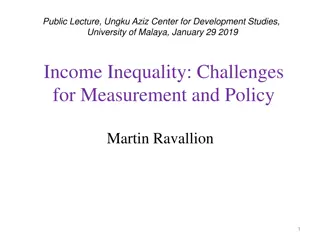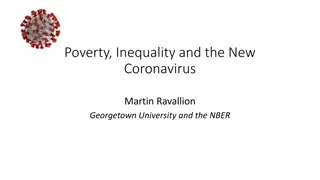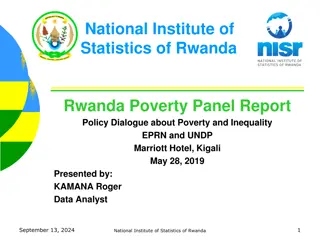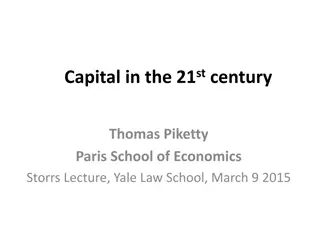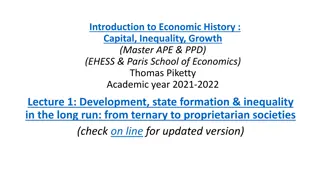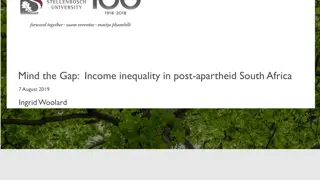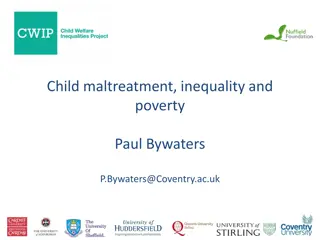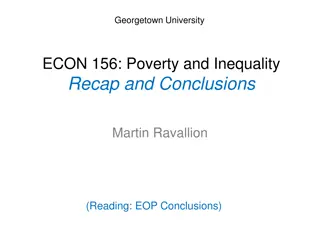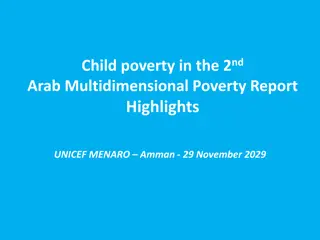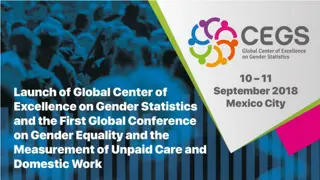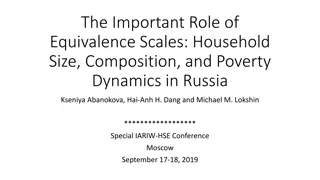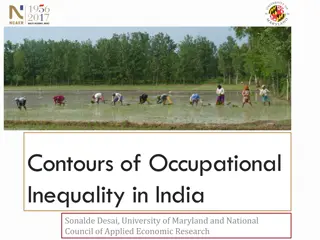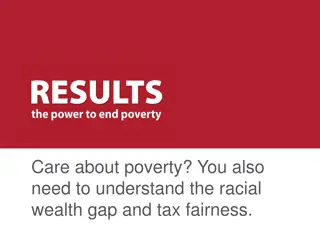Challenges of Poverty and Inequality in Africa
Recent crises, including the COVID-19 pandemic, the war in Ukraine, and climate change, have worsened poverty and inequality in Africa. The continent faces a perfect storm of overlapping crises, with appallingly high rates of poverty affecting millions. Concentrated in lower-middle-income countries, poverty is exacerbated by wealth and income inequalities across different subregions of Africa. Urgent action is needed to address these challenges and promote a development model centered around people to achieve prosperity and peace in Africa.
Download Presentation

Please find below an Image/Link to download the presentation.
The content on the website is provided AS IS for your information and personal use only. It may not be sold, licensed, or shared on other websites without obtaining consent from the author. Download presentation by click this link. If you encounter any issues during the download, it is possible that the publisher has removed the file from their server.
E N D
Presentation Transcript
Fifty-fifth Session of the Economic Commission for Africa Hanan Morsy Deputy Executive Secretary and Chief Economist, UNECA 15 March 2023
Recent crises have exacerbated the existing socio- economic inequities . Title Africa is facing a perfect storm of overlapping and recurring crises. The COVID-19 pandemic, the war in Ukraine and climate change have exacerbated poverty and inequality, which were already significant even before the pandemic. Poverty and inequality pose risks to the achievement of the SDGs and to Africa s prosperity, peace and security, and the social contract. There is an urgent need to foster a development model centered around people and to mainstream poverty and inequality into national and regional development strategies.
with appallingly high rates of poverty (2022) Africa accounts for the highest proportion of the world s poor 54.8 per cent in 2022 (overtaking South Asia 37.6 per cent). 546 million people were living in poverty in 2022, a 74% increase since 1990. 149 million non-poor Africans (whose consumption was 20% above the poverty line) were at risk of falling into poverty in 2022. East and West Africa account for high numbers of non-poor people at risk of falling into poverty in 2022 (48 and 52 million, respectively).
..concentrated in Lower-Middle-Income countries. Countries with the highest and lowest proportion of poor, 2022 (Percentage of the population) Highest proportion of poor Lowest proportion of poor o Lower-middle- income countries (LMICs) in Africa account for over 52% of the total poor in Africa. o Low-income countries represent 45% of the poor in Africa. Source: Calculations by the Economic Commission for Africa (ECA) using the PovcalNet database of the World Bank (accessed November 2022).
Poverty is exacerbated by existing inequalities. Wealth inequality in Africa, by subregion o While inequality is pervasive across all African sub-regions, it is particularly high in Southern Africa. o On the other hand, despite having a disproportionate share of people living in poverty (32%), West Africa has the lowest wealth inequality across sub-regions (Gini at 0.78). Source: Calculations by the Economic Commission for Africa (ECA) using the World Inequality Index database of the World Bank (accessed November 2022).
.with highest income inequality in upper-middle income countries. Income inequality by level of country income o However, income inequality is highest among upper-middle income countries such as South Africa, Namibia and Botswana. o This reinforces that focus solely on growth is insufficient to tackle inequality. We need more targeted policies. Source: Calculations by the Economic Commission for Africa (ECA) using the PovcalNet database of the World Bank (accessed November 2022). Note: The Gini coefficient columns reflect the incidence of income inequality (ranging from 0 for perfect equality to 1 for extreme inequality). The tenth decile columns reflect the income share held by the top 10% of the population. For example, in the upper-middle-income countries, the top 10% of the population owned 39.5% of the income.
Some Recommended Actions for discussion Pursue pro-poor and inclusive macro-economic policies, with spending targeted at safety nets to support the poor and most vulnerable. Ensure resource mobilization for an inclusive recovery, including through fair taxes and by leveraging climate finance for decent job creation. Carve a structural development path that is just and meets people s needs, with industrialization and the AfCFTA acting as catalysts.
Some Recommended Actions for discussion Advance reforms for a more just and inclusive global financial architecture Overhaul the G20 Common Framework and enhance debt regulatory framework Reform the SDR rechannelling mechanism to promote greater utilization, and for SDR allocations to be considered in a rule-based, analytical manner. Scale up affordable and long-term financing for development. Increase the flexibility of eligibility and qualification criteria of the IMF s Resilience and Sustainability Trust to play a catalytic role in green financing. Reinvigorate the IMF s toolkit in response to more frequent shocks. Enhance regulatory framework for credit rating agencies and utilize derisking instruments to enhance market access.
THANK YOU! Follow the conversation: #COM2023 More: www.uneca.org/cfm2023
